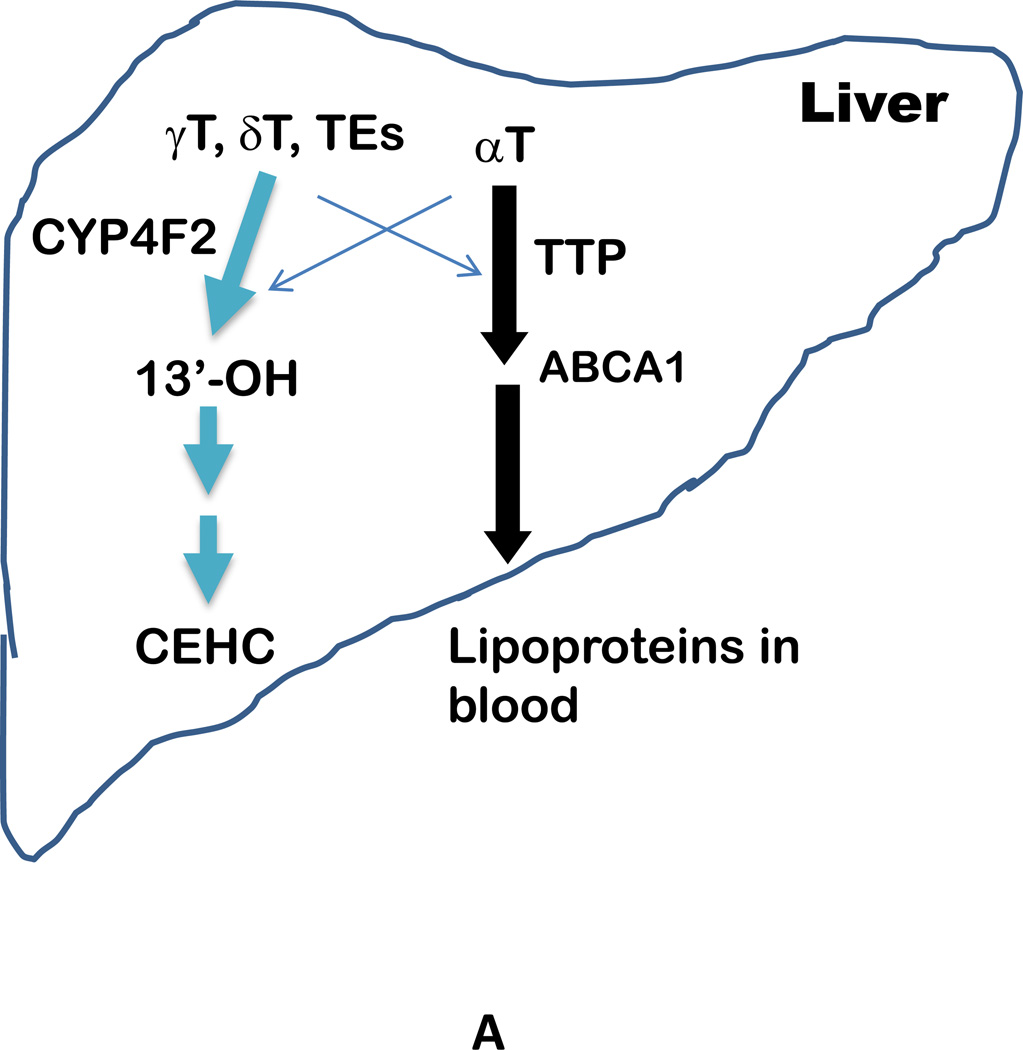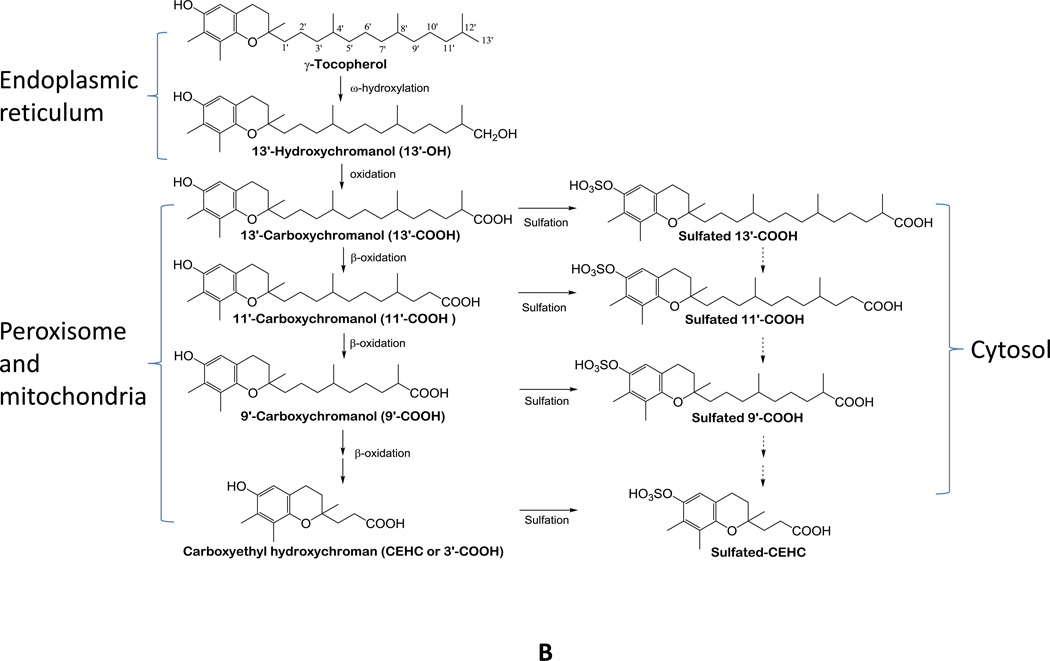Figure 2.
A - Transport and metabolism of vitamin E forms in the liver. With exception of αT, large portions of other vitamin E forms such as γT, δT and γTE are metabolized by CYP4F2-initiated ω-oxidation to form terminal metabolite CEHCs. In contrast, αT and small amounts of other vitamin E forms are incorporated into lipoproteins by α-TTP with assistance of ABCA1 before being transported to other tissues via circulation. The crisscross arrows (light blue) indicate relatively minor events taking place for αT (catabolism) and other forms of vitamin E (binding to α-TTP) in the liver. B – Molecular mechanism of vitamin E metabolism (representatively shown by γT). Vitamin E forms are metabolized by CYP4F2-mediated ω-hydroxylation and ω-oxidation in endoplasmic reticulum. 13’-COOHs are then further metabolized via β-oxidation in peroxisome and mitochondria to generate series of shorter-chain carboxychromanols. Under the condition of high vitamin E intake, sulfation of carboxychromanols in the cytosol may take place in parallel with β-oxidation. It is currently not clear whether sulfated forms can be further metabolized via β-oxidation (dash arrows).


